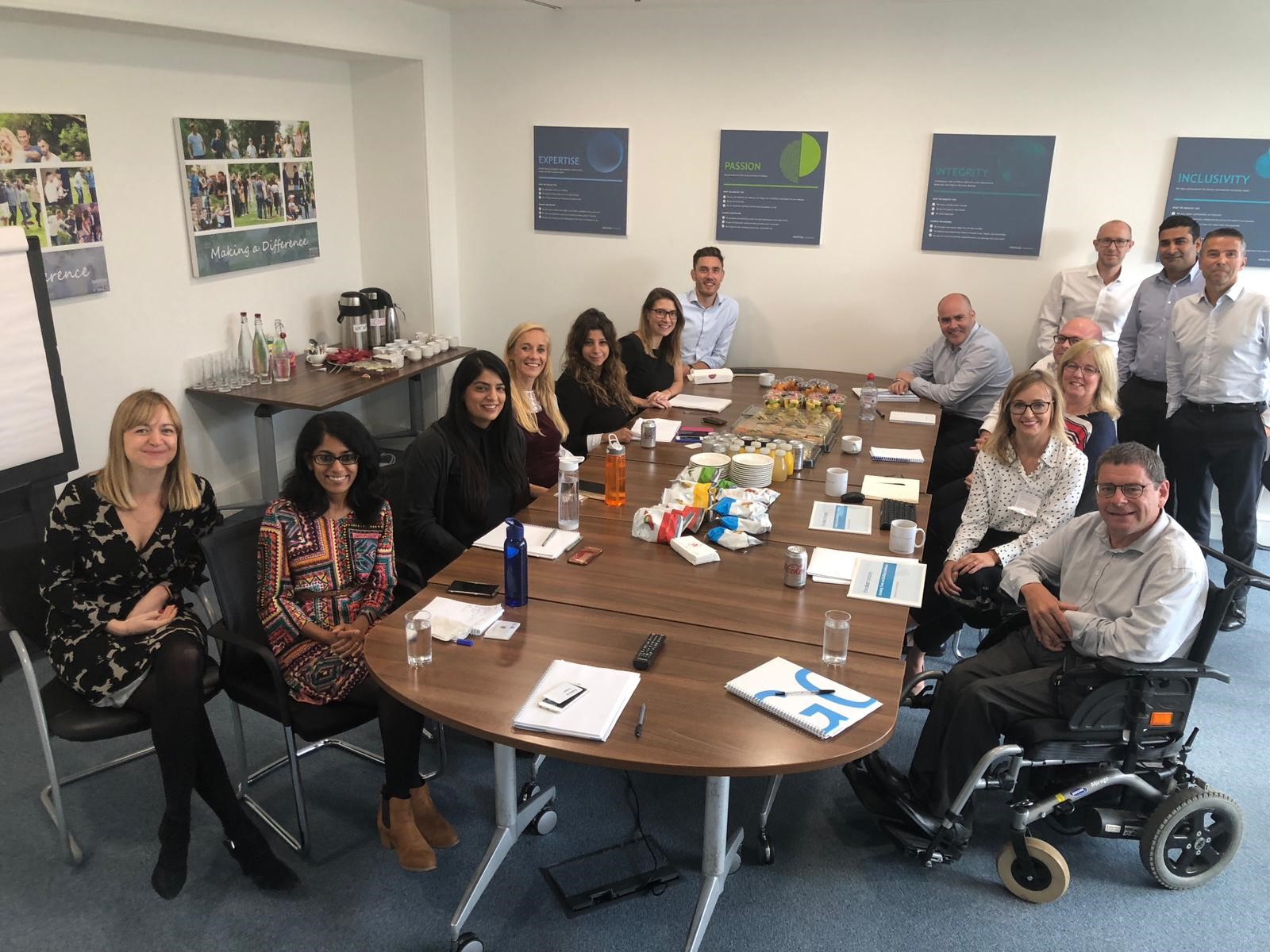
Bringing Disability Confidence into the Workplace
The Case for Disability Confidence:
It is estimated that up to a third of the workforce over the age of 45 will have a disability. This may range from dyslexia through to hearing impairments, diabetes through to learning disabilities – clearly the range and impact of disability in the workplace is vast.
The spending power of those with disabilities is estimated to be more than £200 billion annually. The ‘Purple Pound’ represents a significant commercial opportunity to organisations and yet organisations are failing to represent disabled people in the workplace.
Why is disability in the workplace difficult to talk about?
For many of us, we will remember as a child being told to ‘stop staring’ and ‘don’t say that’ when we encountered people with disabilities. We have grown up in a society that didn’t want us to look at or to talk about disability, so it is no surprise that we don’t have the tools and language to manage disability in the workplace. This societal negativity has left a legacy of people being uncomfortable around disability which we need to address.
Fortunately, society is far more inclusive today and therefore future generations will have different and positive experiences of disability. The key is how we close the gap in the existing workforce. All organisations need to attract and retain the best talent to be successful and there is no doubt that those with disabilities signify an under-represented yet a highly talented pool.
Disability Myths:
There are some myths around disability in the workplace that often deter organisations from attracting disabled talent.
The most common myth is that disabled people are more likely to be absent due to illness. Understanding that being disabled is not the same as being ill is really important and there is no evidence to suggest that sickness absence is a particular issue for disabled employees, with many employers reporting that attendance amongst those with a disability is actually improved.
The second most common myth is that reasonable adjustments cost a lot of money. Most adjustments incur no cost and are adaptations to how we operate, for example changes to working hours. The average cost of adjustments is reported at under £100 per individual.
Employers need to have an open approach to adjustments to allow employees to flag if they need further changes to meet their needs. A myth that many disabled employees report as a challenge is that once reasonable adjustments are in place, the job is done. Disability is not static and we all experience change on a regular basis.
One final myth is that it is often assumed that disabilities start at birth however, significantly more people with disabilities have acquired their disability during their lifetime – therefore at any stage in their career, a non-disabled person may become disabled and employers need to be prepared to respond to the changing needs of their employees.
What can organisations do to become more Disability Confident?
The first step is to have the dialogue. Disability needs to be a topic of conversation in the workplace, allowing employees to feel comfortable in talking about it. Running ‘Disability Confidence’ sessions can help employees and managers to become more knowledgeable and confident.
It is of course essential to ensure that your disabled employees have a voice. Establishing a Disability network is one option but it is also important to identify and promote role models in the organisation as well as sharing personal stories where employees are happy to share.
It is important that organisations tackle the low levels of disclosure. The process is simple as the technology exists to allow organisations to capture information both at the point of joining – and importantly at regular touchpoints during the employee lifecycle to ensure that employees are supported throughout. The main challenge for employers is encouraging employees to disclose which is not as simple. Firstly, there is an education piece around what we mean by disability. Many people with a condition they manage will not consider themselves to be disabled, however they may still require adjustments to be made. Secondly, there is the issue of trust. An organisation with an inclusive culture will encourage disclosure so having an inclusion strategy and engaging your employees in the inclusion journey will help.
Reviewing and embedding an adjustments programme which includes regular reviews will ensure that the identified needs of employees are met. Often the challenge lies with managers who are not sure what to do with any such requests so training is key, along with an escalation point for managers who need advice. Ensuring adjustments are taken into consideration during the recruitment process is also an often-neglected part of the process.
On a final note, it is incredibly important to reach out to people with disabilities as potential candidates. We already know that typical routes to candidate attraction do not reach and / or do not appeal to a significant proportion of those with disabilities. Being clear in attraction materials that the organisation is committed to being inclusive and tapping into specific job boards or network groups will encourage more applications.
Leading Consultancy, The Clear Company, help organisations open the gateway to diverse talent. Providing guidance on mapping policies, values, culture and behaviour, to what’s happening ‘at the coal face’ of day to day recruitment, allows them to discover where hidden barriers are preventing diverse talent getting through to employment.
E enquiries@theclearcompany.co.uk W www.theclearcompany.co.uk
If you would like to receive our Disability Confident Insight Magazine or learn more about the events and publications being released for the Investigo Network please contact Lisa Holberton on lisa.holberton@investigo.co.uk


